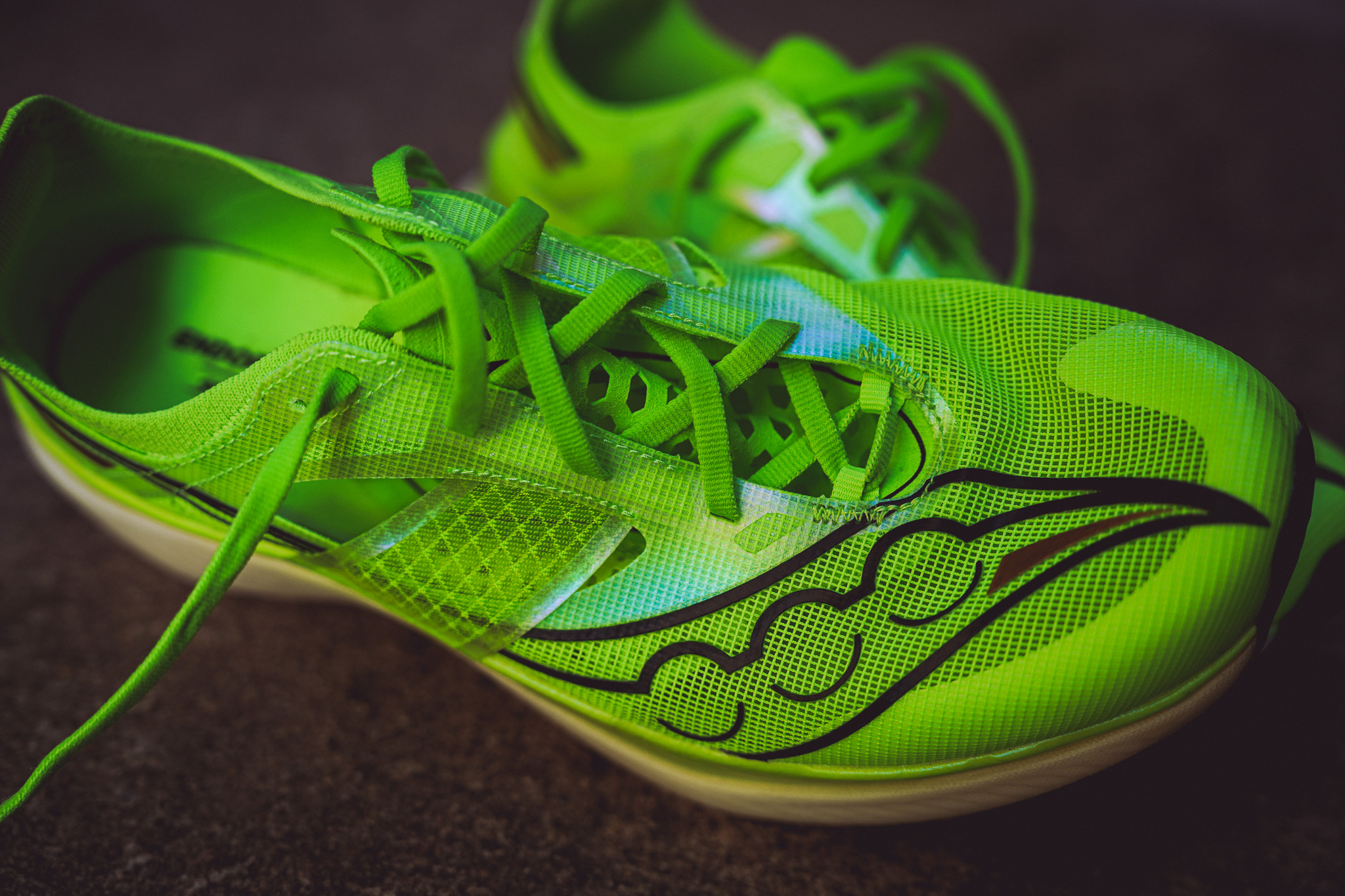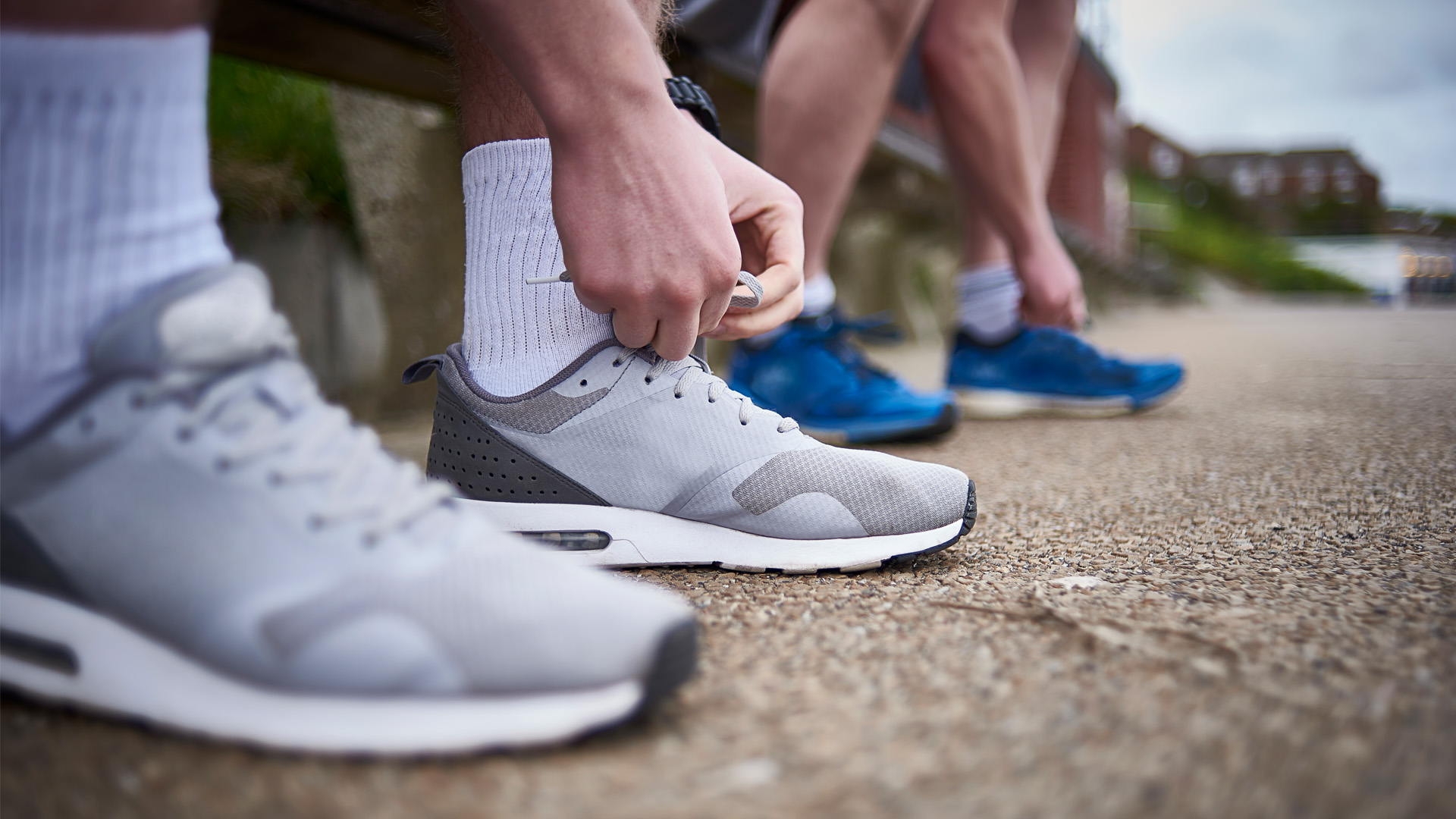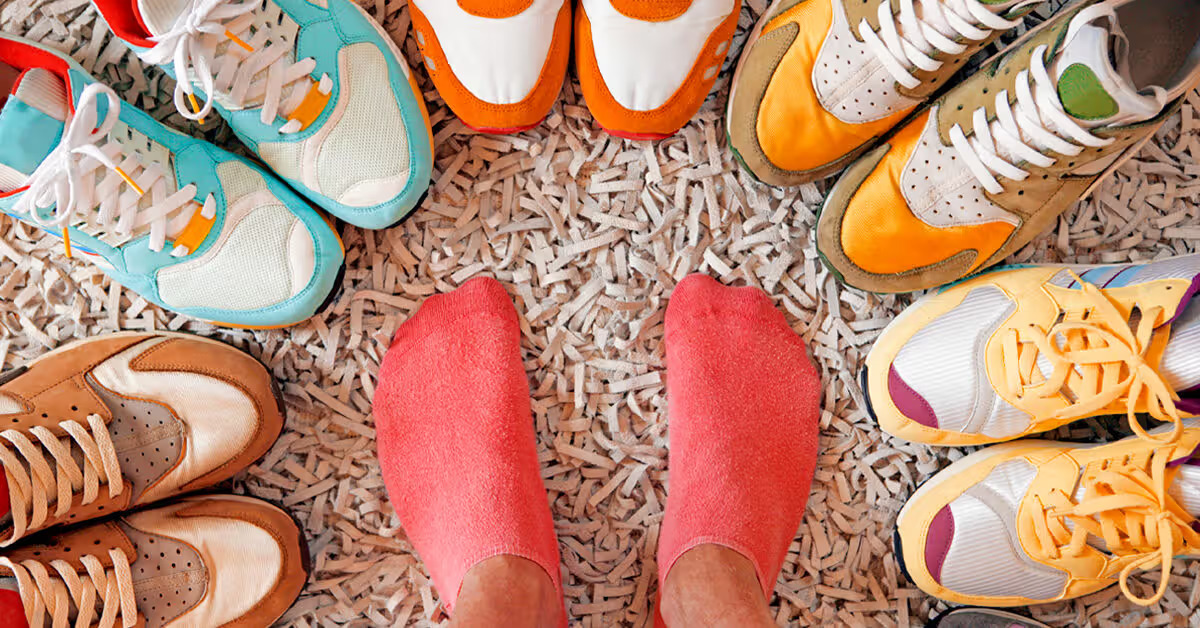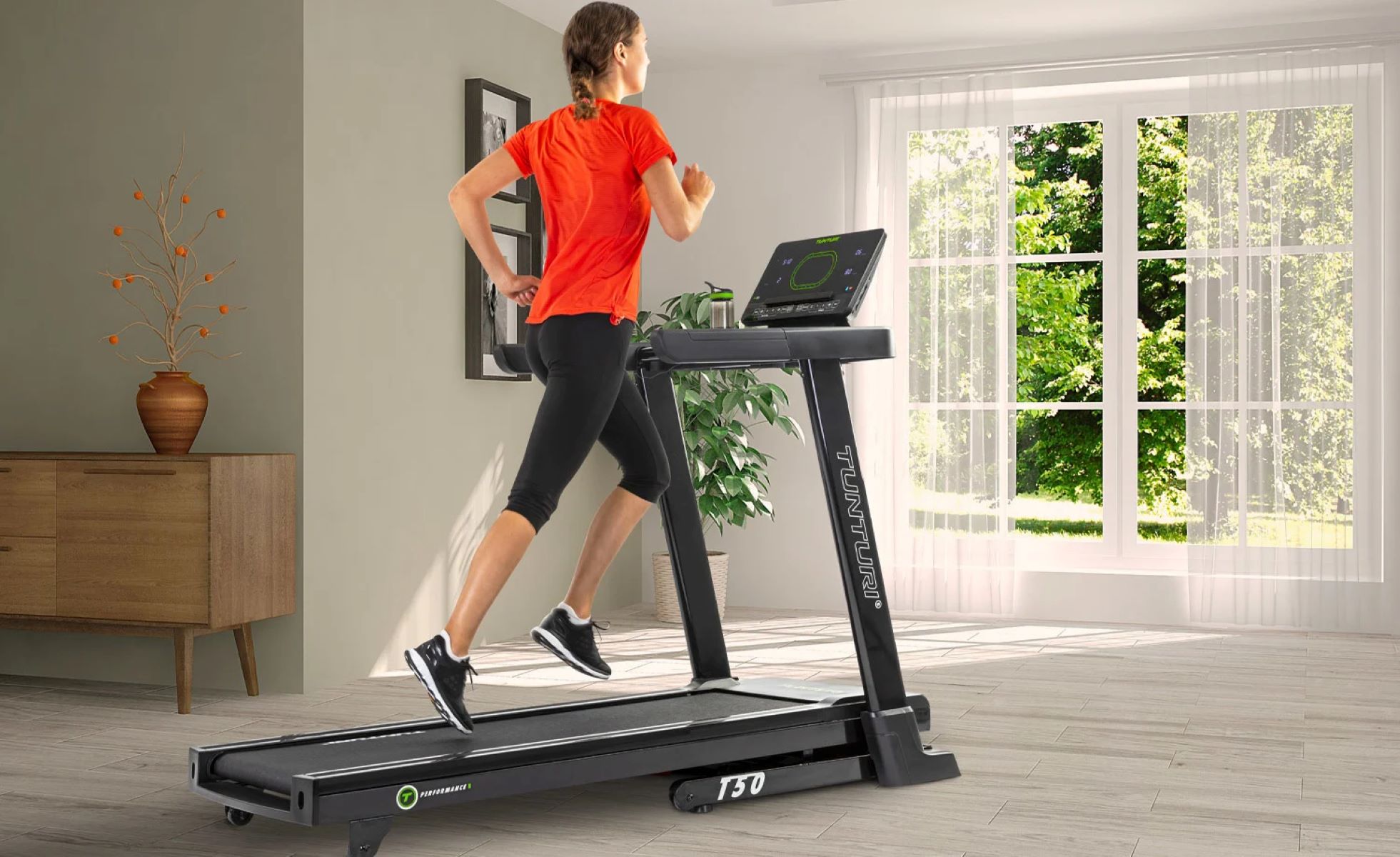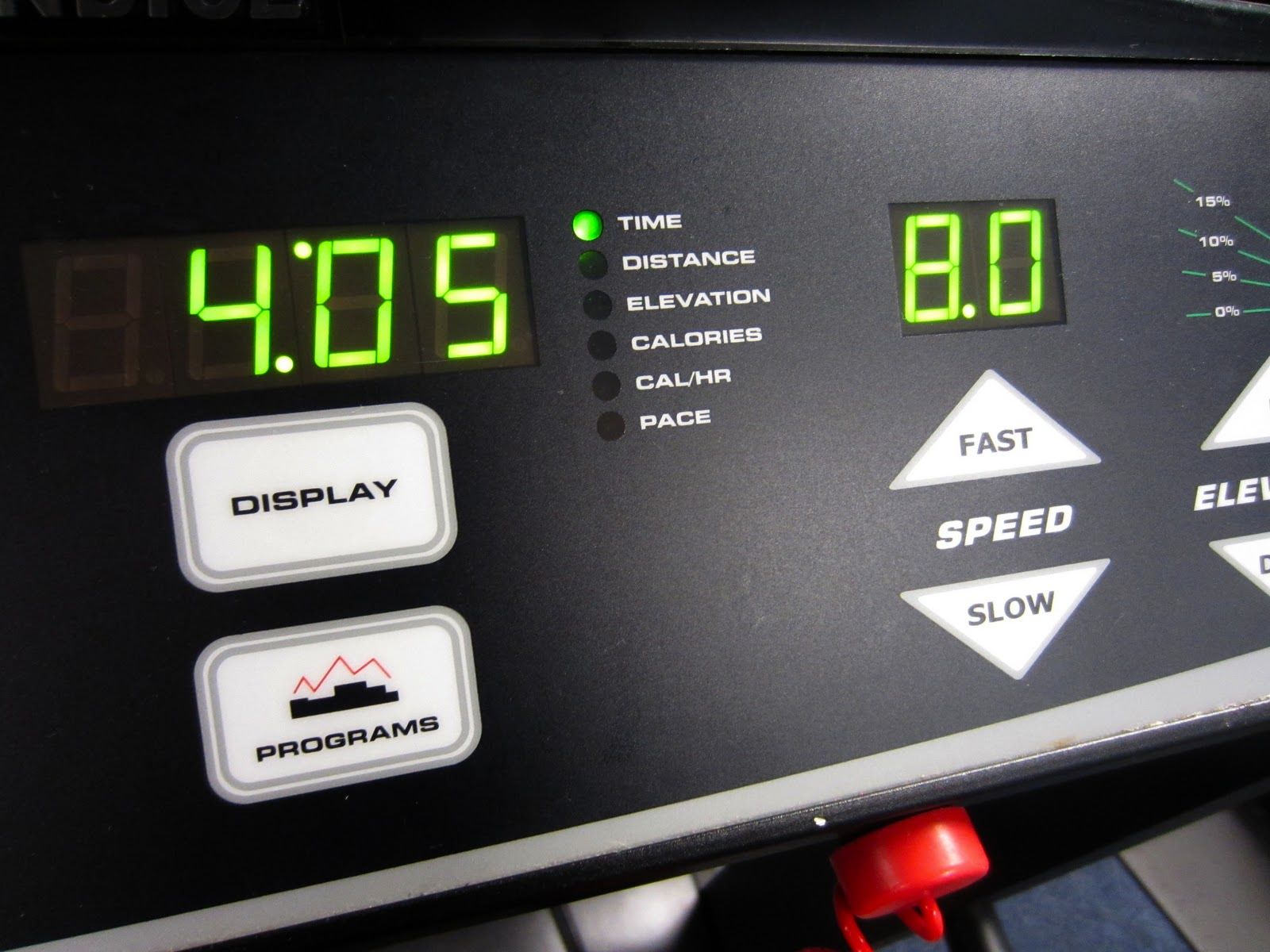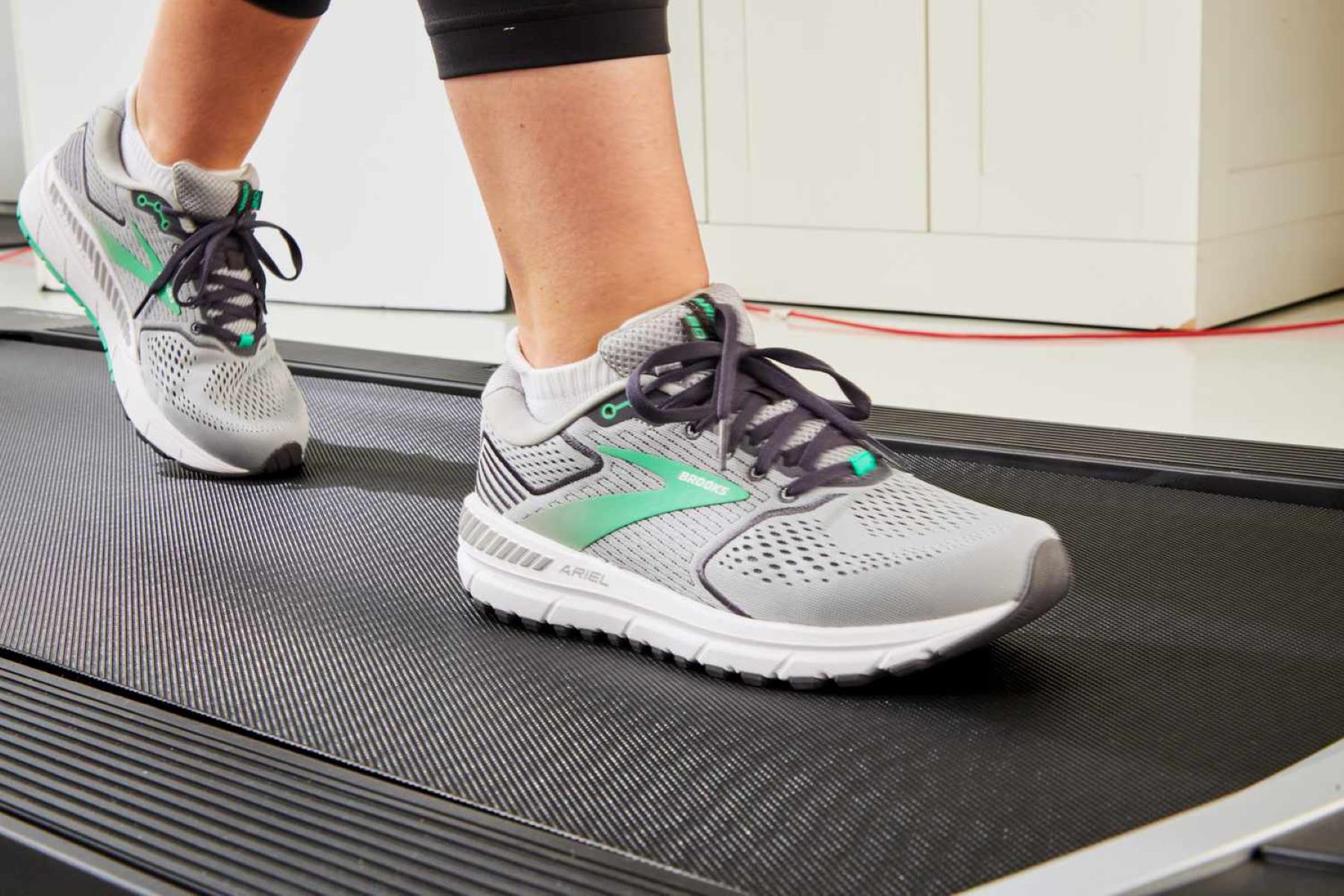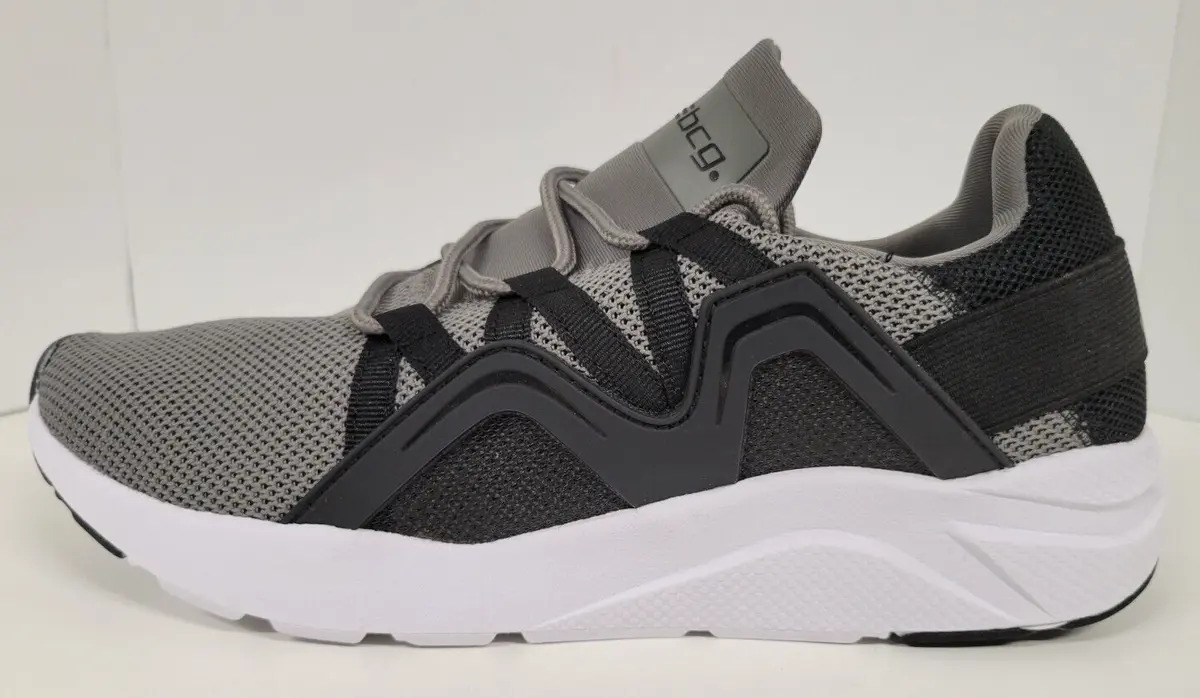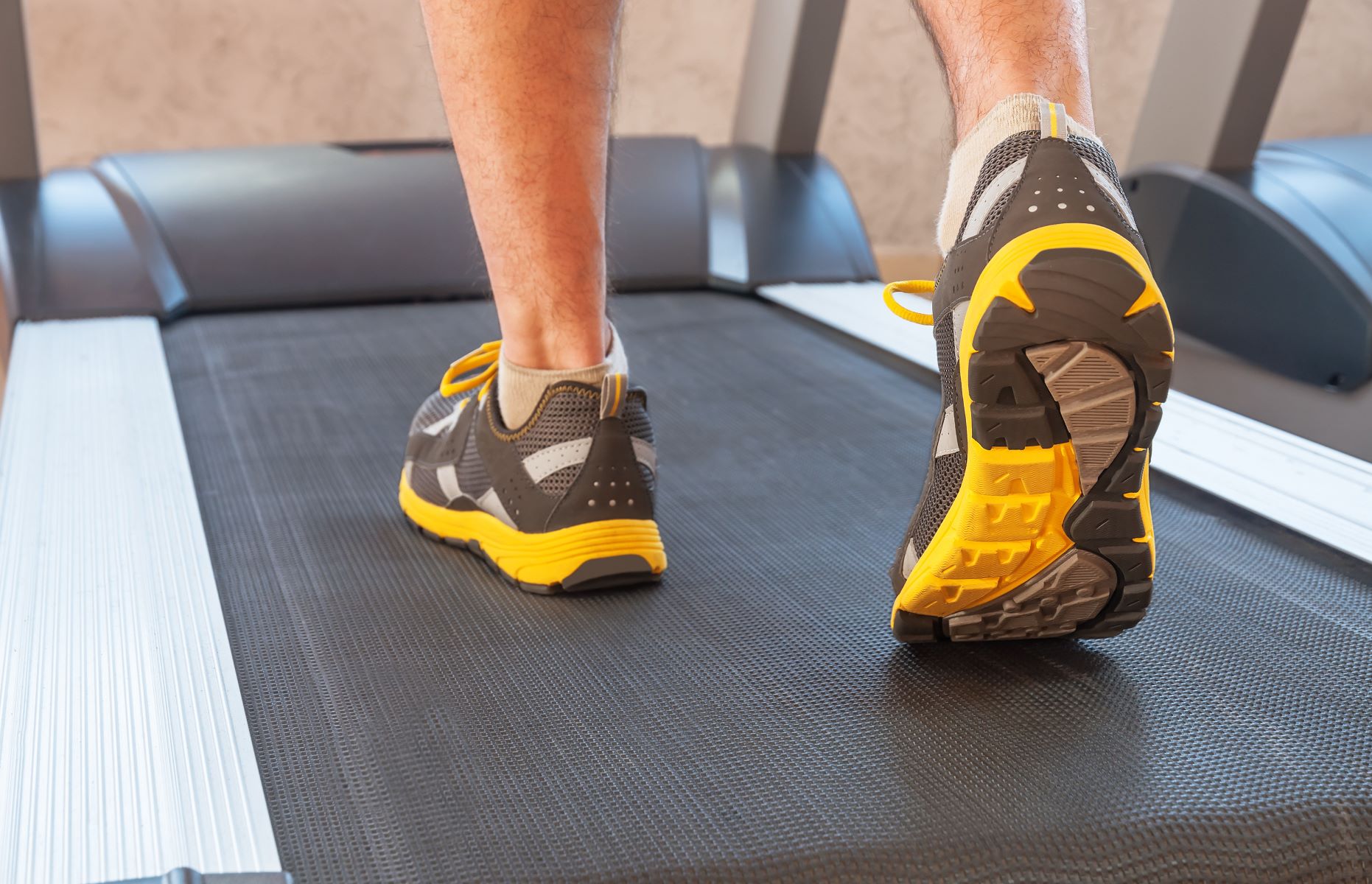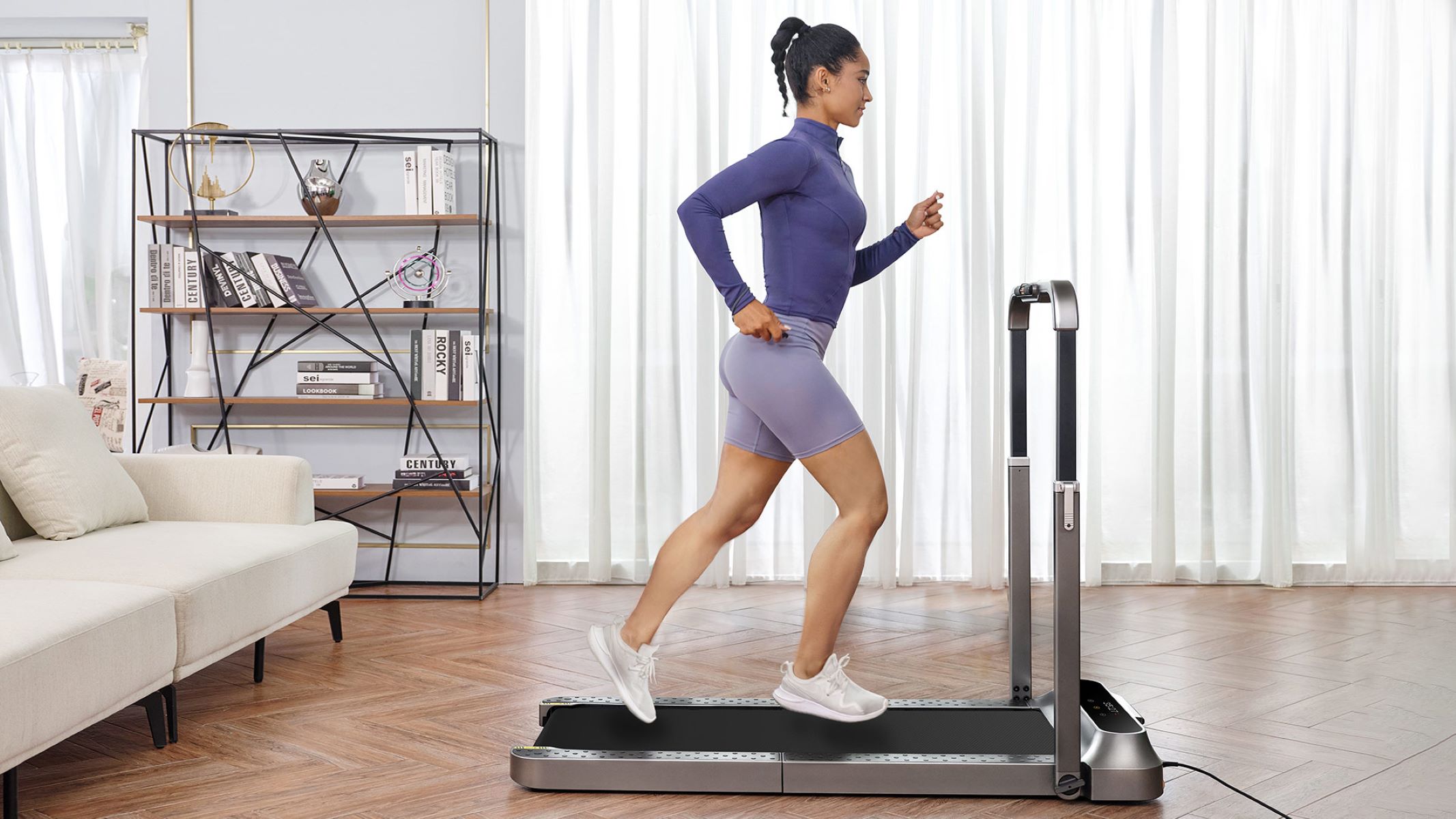Home>Misc>Featured>How Many Miles Can A Pair Of Running Shoes Last For On A Treadmill
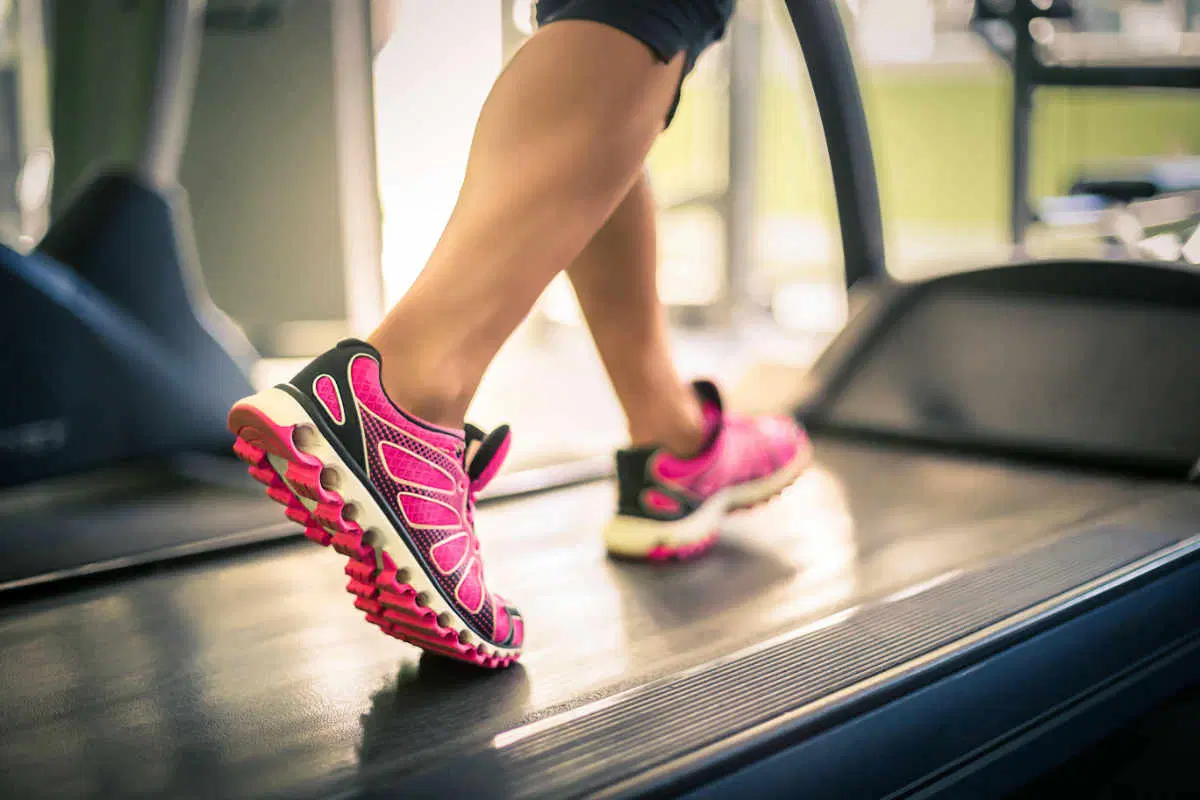

Featured
How Many Miles Can A Pair Of Running Shoes Last For On A Treadmill
Modified: January 2, 2024
Discover the featured running shoes treadmill, designed to provide maximum support and durability. Find out how many miles you can run on these top-rated shoes.
Introduction
Welcome to the world of running! Whether you’re a seasoned athlete or just starting your fitness journey, one thing is certain: having the right pair of running shoes is crucial. But have you ever wondered how many miles your running shoes can handle on a treadmill? In this article, we will delve into the fascinating world of running shoes on treadmills and explore the factors that can affect their mileage.
Running shoes are designed to provide comfort, support, and stability during your workouts. They are specifically engineered to absorb shock and cushion your feet, reducing the risk of injuries. However, over time and with extensive use on a treadmill, the tread patterns on the outsole can wear down, affecting the shoe’s performance and reducing its effectiveness.
Understanding the lifespan of your running shoes on a treadmill is essential to ensure you’re getting the most out of your workouts and preventing any potential injuries. By knowing when it’s time to replace your shoes, you can maintain optimal performance and prolong their lifespan.
In the following sections, we will explore the key factors that can impact the mileage of your running shoes on a treadmill, how to identify signs of worn-out shoes, and the benefits of regular replacement. So, let’s dive in and discover the secrets behind maximizing the longevity of your running shoes on the treadmill!
Importance of Running Shoes on a Treadmill
When it comes to running on a treadmill, the right pair of running shoes can make all the difference. Here’s why:
- Foot Comfort and Support: Running on a treadmill can put stress on your feet, ankles, and joints. Wearing the appropriate running shoes can provide the necessary cushioning and support to absorb shock, reducing the impact on your lower body and preventing potential injuries.
- Stability and Balance: Treadmills can be an unstable surface compared to outdoor running. Running shoes designed for treadmills often have a wider base and extra grip on the outsole to improve stability and maintain balance while running.
- Proper Running Mechanics: Running shoes are engineered to promote proper running mechanics, aligning your feet, ankles, and legs. This helps maintain a natural stride and reduce the risk of overpronation or underpronation, which can lead to discomfort and injuries.
- Shock Absorption: The cushioning and midsole technology in running shoes are designed to absorb shock and impact. This helps to protect your joints, particularly in the knees and ankles, reducing the risk of pain or long-term damage.
- Preventive Measures: Wearing properly fitted and supportive running shoes on a treadmill can help prevent various common running injuries, such as shin splints, plantar fasciitis, and stress fractures. By providing the necessary stability and support, these shoes can minimize the risk of these ailments.
Overall, investing in a good pair of running shoes specifically designed for treadmill use is essential. It not only ensures your comfort and safety but also enhances your performance. Running shoes that are well-suited for the treadmill can optimize your running experience, allowing you to push yourself to new limits without compromising your form or risking injuries.
Factors Affecting Treadmill Mileage
Several factors can influence the mileage or lifespan of running shoes on a treadmill. Understanding these factors can help you gauge when it’s time to replace your shoes. Here are the key factors to consider:
- Running Frequency and Intensity: The more frequently you run on a treadmill and the higher the intensity of your workouts, the quicker your shoes will wear out. The repetitive motion and impact of running can gradually wear down the outsole and cushioning of your shoes.
- Body Weight: Your body weight puts additional stress on your shoes while running. Heavier individuals may experience faster wear and tear on their shoes compared to lighter individuals.
- Running Technique: Your running technique can also impact the wear on your shoes. Running with an asymmetrical gait or striking the ground with excessive force can accelerate the breakdown of the shoe’s materials.
- Treadmill Surface: The type of treadmill surface you run on can affect the mileage of your shoes. Softer, more cushioned surfaces may be gentler on your shoes compared to firm or harder surfaces.
- Treadmill Maintenance: The condition and maintenance of the treadmill itself can impact the wear on your shoes. Uneven surfaces, worn-out belts, or debris on the treadmill can cause additional strain on your shoes and contribute to their deterioration.
It’s important to note that the mileage of running shoes can vary based on these factors, as well as the quality and construction of the shoes themselves. Additionally, every person’s running style and body mechanics are unique, so their shoes may wear differently even under similar conditions.
To gauge when your shoes need replacement, pay attention to any noticeable changes in comfort, support, or cushioning. If you start experiencing discomfort, such as shin splints, knee pain, or reduced stability, it may be a sign that your shoes are no longer providing adequate support.
Now that we understand the factors that can affect the mileage of treadmill shoes, let’s explore the average lifespan of running shoes on a treadmill and the signs that indicate they need to be replaced.
Average Lifespan of Running Shoes on a Treadmill
The lifespan of running shoes on a treadmill can vary depending on several factors, including frequency of use, running technique, and shoe quality. On average, running shoes can last between 300 to 500 miles when used exclusively on a treadmill.
It’s important to note that this mileage range is just an estimate and can vary depending on the factors mentioned earlier. Runners with a heavier body weight or individuals who engage in intense workouts may find their shoes wearing out on the lower end of the mileage range, while lighter runners or those with less frequent or less intense workouts may find their shoes lasting longer.
Another important factor to consider is the quality of the running shoes. Higher-quality shoes with more durable materials may have a longer lifespan compared to lower-quality ones. However, regardless of shoe quality, it’s essential to pay attention to signs of wear and tear and replace your shoes when necessary.
Additionally, the midsole cushioning of running shoes tends to wear out faster than the outsole. The midsole is responsible for providing shock absorption and cushioning, so when it starts to break down, you may begin to experience discomfort or loss of support during your runs.
To determine the mileage of your running shoes, keep track of your treadmill workouts and the distances you cover. Most running apps and fitness trackers can help you monitor and record your mileage. By keeping an eye on your mileage, you can have a better idea of when it’s time to start considering a replacement pair of shoes.
Remember, it’s crucial to listen to your body and pay attention to any signs of discomfort or reduced performance. If you start experiencing pain, instability, or notice visible signs of wear on the outsole or midsole, it’s a strong indication that it’s time to retire your old running shoes and invest in a fresh pair.
Signs of Worn-Out Treadmill Shoes
Just like any other piece of sports equipment, running shoes have a limited lifespan. Knowing the signs of worn-out treadmill shoes is essential to ensure your comfort, safety, and overall performance. Here are some common signs indicating that it’s time to replace your running shoes:
- Loss of Traction: The grip or traction of your shoes is crucial for stability and preventing slips. If you notice a significant decrease in traction or the outsole has become smooth and worn down, it’s a clear sign that your shoes need to be replaced.
- Visible Midsole wear: Take a close look at the midsole of your shoes. If you see visible signs of compression, creasing, or flattening, it indicates that the cushioning has worn out. The midsole provides shock absorption, so a worn-out midsole can compromise comfort and impact protection.
- Uneven Wear Patterns: Pay attention to how the outsole of your shoes wears down. If you observe uneven or excessive wear in certain areas, it can indicate an imbalanced gait or improper foot strike. It’s a clear sign that you may need to address any biomechanical issues and replace your shoes.
- Decreased Cushioning: Over time, the cushioning of running shoes can become less responsive and provide reduced shock absorption. If you start feeling increased impact during your runs or experience discomfort in your joints or muscles, it’s time to consider getting new shoes.
- Increased Discomfort: If you notice discomfort, pain, or aching in your feet, ankles, or joints during or after your runs, it could be a sign that your shoes are no longer providing appropriate support or stability. This may be due to the degradation of the cushioning or breakdown of the shoe’s structure.
It’s important to remember that the signs of worn-out treadmill shoes may be gradual and may not always be immediately noticeable. Regularly inspecting your shoes and paying attention to any changes in comfort, stability, or performance can help identify the need for replacement.
Replacing your worn-out treadmill shoes in a timely manner is crucial for maintaining optimal performance and minimizing the risk of injuries. By investing in a new pair of shoes, you can ensure that you’re getting the support, cushioning, and stability needed for a safe and comfortable running experience.
How to Extend the Lifespan of Treadmill Shoes
While running shoes will eventually wear out, there are several steps you can take to prolong their lifespan and get the most out of your investment. Here are some tips to help extend the longevity of your treadmill shoes:
- Rotate Your Shoes: Alternate between two or more pairs of running shoes. This allows each pair to have ample time to recover and regain their cushioning and shape between workouts.
- Keep Them Clean: Regularly clean your treadmill shoes, especially if you notice dirt or debris on the outsoles. Use a soft brush or cloth to remove any excess dirt, which can cause premature wear and tear.
- Store Them Properly: When you’re not using your treadmill shoes, store them in a cool and dry place away from excessive heat or moisture. Avoid keeping them in a crowded or stuffy closet, as it can affect their shape and integrity.
- Protect the Outsoles: Invest in durable outsole protectors or “shoe guards” to minimize the wear on the bottom of your shoes. These protective covers can help extend the lifespan of the outsole and improve traction.
- Use Your Shoes for Running Only: Reserve your treadmill shoes for running or workouts on the treadmill. Using them for casual activities or other sports can accelerate the wear and tear, reducing their lifespan.
- Replace Insoles: Consider replacing the insoles of your shoes periodically, particularly if you tend to put a lot of mileage on them. Fresh insoles can help restore cushioning and support.
- Monitor Mileage: Keep track of the mileage on your shoes. This will give you a better idea of when it’s time to start considering a replacement. Most running apps and fitness trackers can help you keep a record of your mileage.
- Listen to Your Body: Pay attention to any signs of discomfort, pain, or changes in your running mechanics. If you notice any issues, consider getting your running gait analyzed by a professional and address any biomechanical imbalances that may be contributing to premature wear on your shoes.
Remember, while these tips can help prolong the lifespan of your treadmill shoes, they won’t make them last indefinitely. It’s important to know when it’s time to retire your old pair and invest in a new one to ensure optimal performance, support, and safety during your runs.
Benefits of Replacing Treadmill Shoes Regularly
Regularly replacing your treadmill shoes is crucial for maintaining your comfort, safety, and overall running performance. Here are some key benefits of replacing your running shoes on a regular basis:
- Improved Cushioning and Shock Absorption: Over time, the cushioning and midsole of running shoes lose their ability to absorb shock effectively. By replacing your shoes regularly, you ensure that you have optimal cushioning to protect your joints and prevent discomfort during your runs.
- Enhanced Stability and Support: Worn-out shoes can lose their structural integrity, compromising their stability and support features. Investing in new shoes allows you to reap the full benefits of the shoe’s design, providing proper alignment for your feet and reducing the risk of injuries related to instability.
- Reduced Risk of Injuries: Running in worn-out shoes can increase the likelihood of injuries, such as sprains, strains, and stress fractures. By replacing your shoes, you maintain the necessary support and cushioning, minimizing the impact on your body and reducing the risk of these common running injuries.
- Optimal Performance: New running shoes can enhance your running performance by providing a comfortable and responsive platform for your workouts. With proper support and cushioning, you can maintain a more efficient running gait, improve your stride, and potentially increase your speed and endurance.
- Maintained Running Form: Worn-out shoes can affect your running mechanics and contribute to imbalances or compensatory movements. By replacing your shoes, you can preserve your natural running form, reducing the risk of overpronation, underpronation, or other biomechanical issues that may lead to discomfort or injuries.
- Increased Confidence: Wearing a fresh pair of running shoes can boost your confidence and motivation to hit the treadmill. The knowledge that you have reliable shoes that provide the necessary support and comfort allows you to focus on your workout without any distractions or concerns about footwear.
Replacing your treadmill shoes regularly should be viewed as an investment in your overall running experience and well-being. By prioritizing the condition of your shoes, you can enjoy a safer, more enjoyable, and injury-free running journey.
Remember, there’s no specific timeframe for shoe replacement that works for everyone. It’s essential to monitor the signs of wear and tear, listen to your body, and consider factors such as mileage, running frequency, and shoes’ overall condition. By being proactive and replacing your shoes when needed, you can continue to progress in your fitness journey and make the most of your treadmill workouts.
Conclusion
Choosing the right pair of running shoes for your treadmill workouts is essential for comfort, support, and performance. Understanding the factors that affect the mileage of treadmill shoes, such as running frequency, body weight, and running technique, can help you gauge when it’s time to replace them.
On average, running shoes can last between 300 to 500 miles on a treadmill, but this can vary based on various factors. Signs of worn-out treadmill shoes include loss of traction, visible midsole wear, uneven outsole patterns, decreased cushioning, and increased discomfort.
To extend the lifespan of your treadmill shoes, consider rotating them, keeping them clean, storing them properly, and protecting the outsoles. Additionally, replacing worn-out insoles, monitoring your mileage, and paying attention to any changes in your running mechanics are crucial in prolonging the lifespan of your shoes.
Regularly replacing your treadmill shoes brings several benefits, including improved cushioning and shock absorption, enhanced stability and support, reduced risk of injuries, optimal performance, maintained running form, and increased confidence.
Remember, your treadmill shoes are an investment in your running journey and overall well-being. By taking care of your shoes and knowing when to replace them, you can enjoy a safe, comfortable, and fulfilling running experience on the treadmill.
